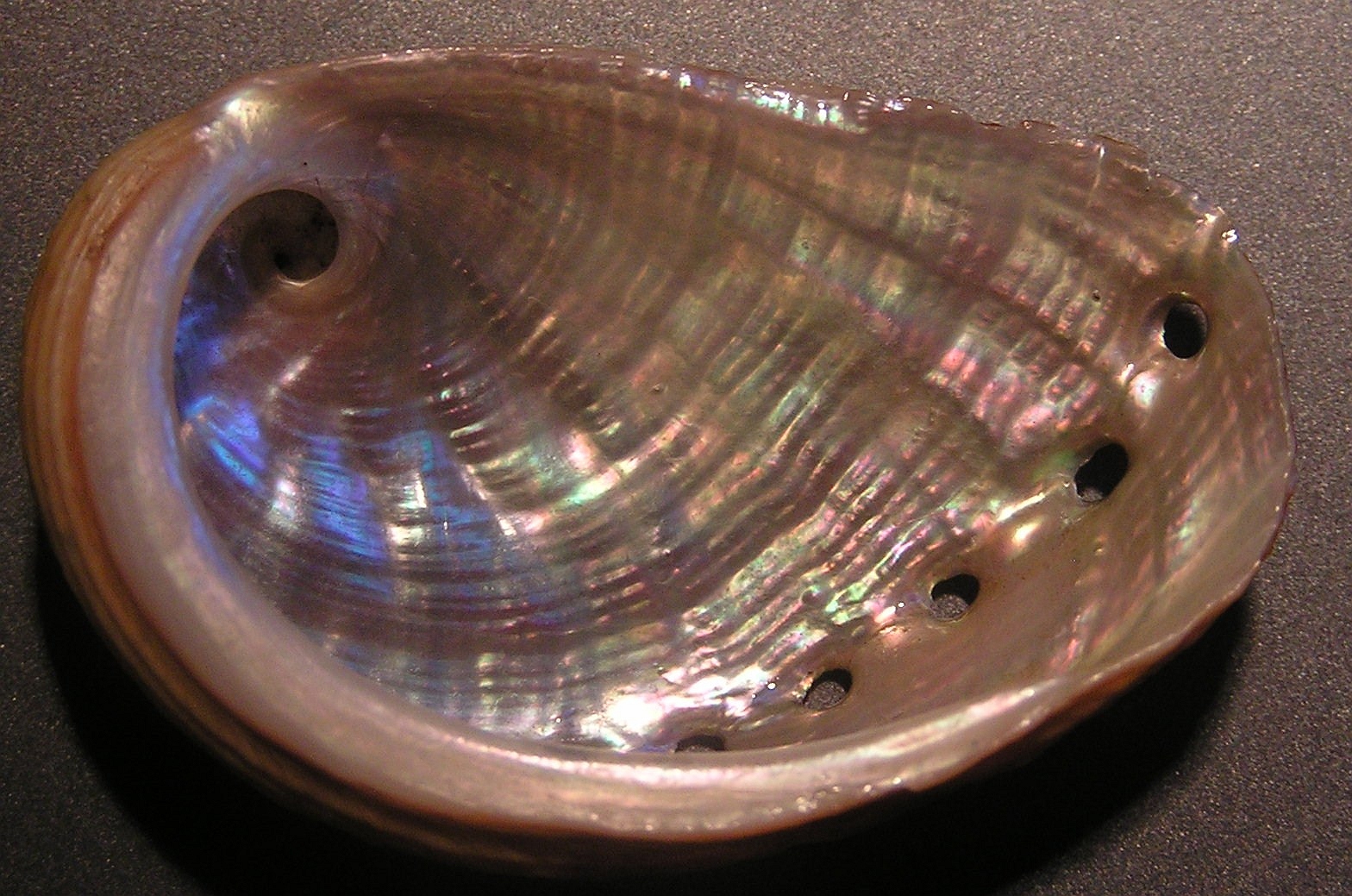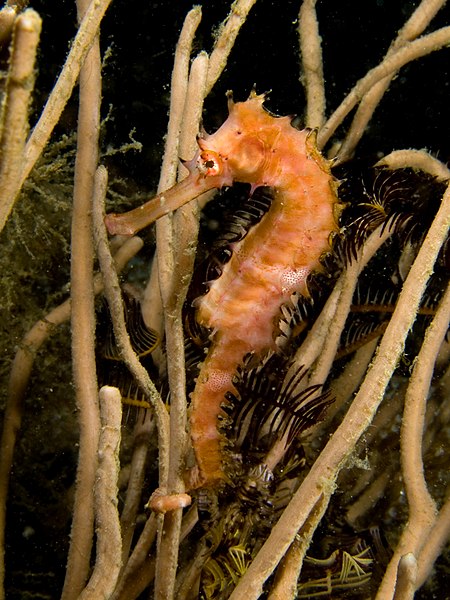Lovely as it is here in Kona, it does have kind of a Disneyland quality. Anna did a great job of getting us out of the tourist rut for our second day here. She was poking around food web sites looking for interesting places to eat. That led her to a discussion of sustainably-sourced fish, and from there she started reading about aquaculture. It turns out there’s some interesting stuff going on with fish farming right nearby, so being the colossal science dorks that we are, we thought we’d go check it out.
Kona Airport is on a big lava plain sticking out into the ocean. It’s surrounded on three sides by an industrial park owned and run by the awkwardly named Natural Energy Laboratory of Hawaii Authority. It’s the site of a former alternative energy project that now is home to all kinds of aquaculture and related ocean science. While an industrial park next to the airport might seem like an odd place to visit during a tropical vacation, know that it’s still Hawaii, so there are the same incredible black rock beaches and palm trees and exotic foliage as everywhere else.
First we heard a presentation by Dr Sara Peck, a professor of coral reef ecology and aquaculture from the University of Hawaii, explaining what NELHA is. She was wearing a remarkable silk pantsuit with an underwater motif and flip-flops — even the academics here have that island flavor. If Christopher Guest does a mockumentary of our vacation, Dr Peck will be played by Catherine O’Hara using her midwestern accent from A Mighty Wind.
NELHA was founded in response to the oil crisis of the seventies, a particularly troubling time for Hawaii, since at the time the islands were using imported petroleum for 99% of their energy. The University of Hawaii got a bunch of federal grant money to do a pilot project on ocean thermal energy conversion, using the temperature differential between the ocean’s surface and its depths to generate electricity. Here’s the idea: you take an easily-boiled working fluid, like ammonia. You use warm ocean surface water to boil the fluid and use the vapor to turn a turbine. Then you use cold deep water to condense the fluid and start the process over again. This method generated marginally more energy than it cost to run it, but it didn’t scale, and meanwhile the energy crisis passed and the tax dollars dried up.
There’s been some renewed interest in NELHA’s seawater energy experiments in the past few years, especially from an unexpected source: the Defense Department. It makes sense, I guess; they burn a lot of oil and they’re doing a lot of fighting over it. NELHA has some other experiments underway too. The building we heard the presentation in has a futuristic cooling system combining cold ocean water with a solar chimney in the roof. Outside there are solar arrays with curved mirrors, and a futuristic windmill with strangely shaped fins that can capture updrafts in addition to regular horizontal wind.
Meanwhile, NELHA has this gigantic apparatus for piping large quantities of ocean water of different temperatures up onshore. This turns out to be a terrifically useful setup for aquaculture, since normally keeping the water at the right temperature is a monstrous energy expense. Most of NELHA’s land is devoted to farming endangered sea creatures and assorted useful and nutritious algaes. There are a couple dozen such operations. We toured two of them. The first is an organic abalone farm, the Big Island Abalone Corporation. Before going on the tour, I was only vaguely aware of what an abalone even is, but apparently they’re quite a delicacy in Japan and elsewhere. They aren’t very photogenic, even by gastropod standards, but the insides of their shells are prettily iridescent, especially with the curved array of gill holes.
An organic abalone farm consists of a bunch of metal and concrete tanks fed by a complex system of pipes. There are tanks for each stage of the abalone’s complex lifecycle, tanks for growing the algae and seaweed they’re fed on, tanks for filtering the water and so on. It would make an amazing video game level. At the end of the tour, our guide grilled us up a few abalones. They’re quite tasty, straight up or with soy sauce. If you’re going to eat them, make sure to buy them from the organic farmers, and leave the endangered wild population alone.
Next we went on a tour of the Ocean Rider Seahorse Farm. Seahorses are under terrible pressure both from aquarium enthusiasts and the Asian traditional medicine market — dried ground-up seahorse is supposedly a natural form of Viagra. Seahorses are notoriously difficult to raise in captivity. They won’t eat anything but live tiny shrimp, which are hard to come by, and they mate for life. If you separate a mating pair, they die in a few weeks or months.
The Ocean Rider people have succeeded in solving both problems by careful selective breeding of a particular species. They’ve managed to essentially domesticate seahorses that will eat Sea Monkeys and the frozen shrimp you can get at the pet store, and that will pair up with any other seahorse you put them in a tank with. If you absolutely must have seahorses in your aquarium, you should get these.
One of the guys on our tour asked the guide for some care and feeding pointers, and she cheerfully responded that she only knows how to raise seahorses in ten thousand gallon plastic tubs. It was delightfully surreal to see the tubs full of thousands of newborn seahorses — they look just like the adults, but half an inch long. We got to feed some live shrimp to the adults — they suck them into their tube-shaped mouths whole like little vacuum cleaners. Ocean Rider also has a tank where you can stick your hand in and a seahorse will wrap its tail around your finger. It’s a pretty magical sensation. Don’t do this at home or in the wild — these particular seahorses are used to human contact but usually it freaks them out.
The next challenge for Ocean Rider is to breed Leafy Sea Dragons, maybe the most beautiful marine organism in the world, and even more horribly endangered than regular seahorses.
Leafy Sea Dragons don’t do any better in captivity than other seahorses, and even getting your hands on animals to experiment with is a challenge. They can only be found in Australia, and the Australian government only permits one individual to take one animal from the wild per year. As a result, a single sea dragon costs fifteen to twenty thousand dollars. Even so, they’re in high demand, and they’re a major marquee draw for civic aquariums. Ocean Rider has four dragons. They’ve been living cheerfully in their tub for a few years, but they haven’t successfully mated yet. Keep your fingers crossed.
After all the aquaculture, we went to see some sea creatures in their natural habitat, with a quick sunset snorkel at a little beach park right by our condo. Even smack in the middle of tourist Disneyland, you stick your face underwater and boom, there’s a pufferfish, there’s some coral, there are some sea urchins. Between the sunset and the palm trees and the little kids up the beach getting a hula lesson, it was like being in a postcard.




